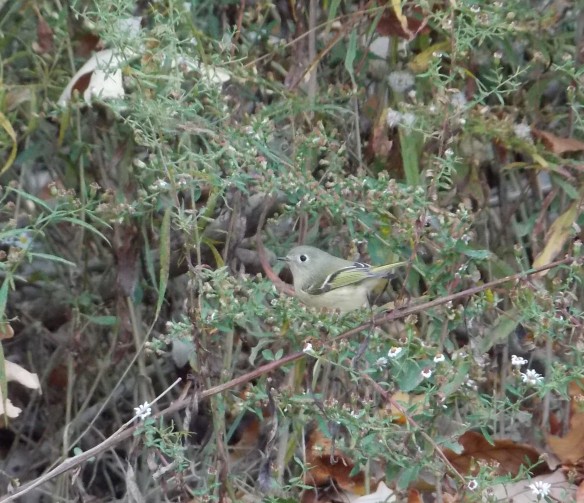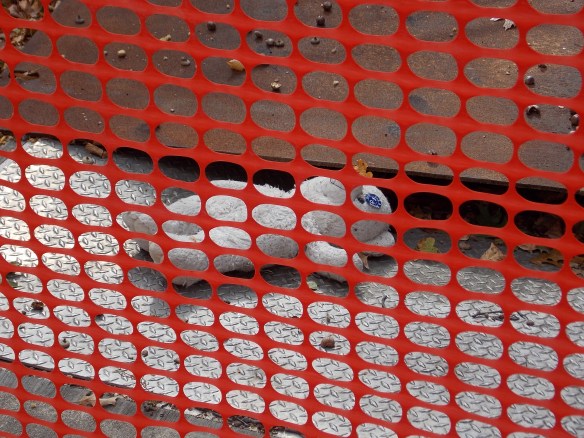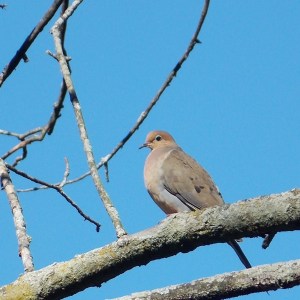The birding has been good lately, with my new house an ideal launchpad to hotspot Franke Park. I have been twice in as many weeks and have pumped up my green list to 98 species. Photos, however, have not been easy to get this spring. Here is the best (and only) one from those trips:

Blue-gray Gnatcatcher
The yard birding has been superb, too. And the whole family has been involved. It all started a few weeks ago when we added Mallard to the list. We had Mallard as a yard bird at the old house, but only as a flyover.

Mallard
These were different. Jaime spotted them in the yard underneath our feeders one evening at dinner, and things just weren’t the same after that for the kids.

Birds and Kids
The ducks did laps around the house as the kids chased them from window to window. Dinner was put on hold.

Rose-breasted Grosbeak
A similar thing happened today when a small flock of Rose-breasted Grosbeaks arrived at the house. While I was at work, Jaime proceeded to text me updates on the comings and goings of these charismatic feeder birds. She also took several great photos, like the one above.

Rose-breasted Grosbeaks
We had at least three individual Rosebeasts appear all at once. And they seem to be thick all over the state as of today.

Kids and a Rosebeast
And again, the kids got in on the action, too.

White-throated Sparrow
The yard has also played host to a variety of other birds, and the list is already up to 35 species, several of which have been sparrows.

White-crowned Sparrow
White-throateds have been common and consistent all spring, but today the surprise was a White-crowned. WCSP is a bird we never had on our old yard list.

Chipping Sparrow
The sparrow train continued with Chipping, too.

American Robin
We’ve also had thrushes, like this puffed-up male American Robin.

Gray-cheeked Thrush
A more interesting thrush appeared last weekend. I assumed the skulker in the bushes was a Swainson’s Thrush, but a more careful look revealed its negative field marks: no strong eye ring, no buff-colored face, and no warmth to the rest of the bird’s grayish feathers. Good for Gray-cheeked Thrush! I have only seen a couple of these birds in the county, and I missed them entirely last year. This individual was a strong addition to the yard and green lists.

Nashville Warbler
Another high-quality migrant passing through the yard was a Nashville Warbler. Or is this a female Canada Warbler? I had to double-check that this was in fact a Nashville by referencing the gray hood continuing under the beak, as opposed to the yellow from the breast reaching up to the beak on a female Canada. That is not a field mark I have ever had to notice before, but the strength of the eye ring screaming “Canada” required it.

Downy Woodpecker
Not all birds are that tough, though. Downy Woodpeckers are gluttons and will pose nicely so long as the suet is flowing. This female gave little regard for manners as chunks of it flew from her saturated feathers.

House Finch
Rounding out the photos is a sorry male House Finch showing some nasty swelling around his eyes.
That’s all for the mostly run-of-the-mill. At the end of April, I was running ahead of my listing pace for the last two years, and that is even considering that migration here has been somewhat late with a lot of rain and wind keeping birds south. My next big outing will be on May 17th when I plan on undertaking a Big Green Day. I have never done anything like that before, so it will be fun to see how many species I can rack up by bike and how high I can grow the list. Stay tuned!














